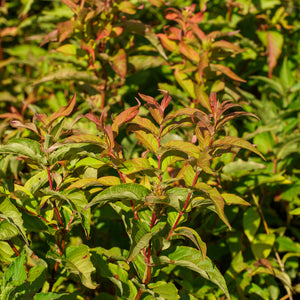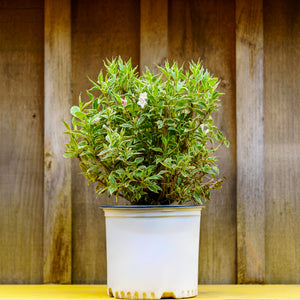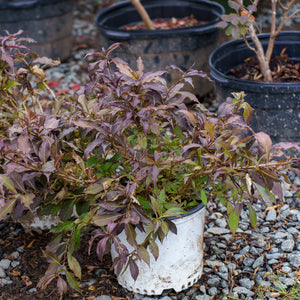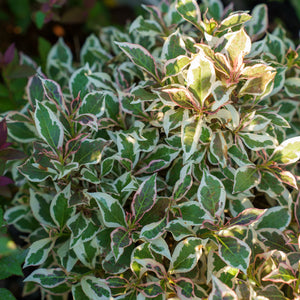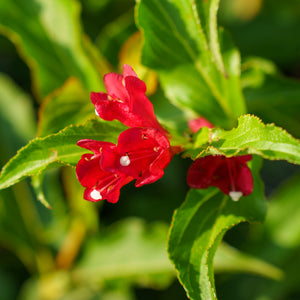The Weigela Guide
Weigela (Weigela florida and hybrids) is a vibrant, deciduous shrub prized for its trumpet-shaped flowers, colorful foliage, and ability to attract hummingbirds. Native to parts of East Asia, weigela has become a popular landscape plant in temperate gardens for its extended bloom period, ease of care, and bold visual appeal.
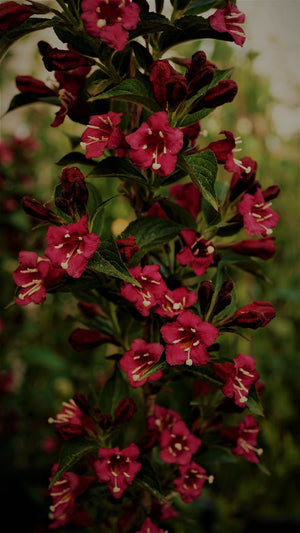
About
Weigela shrubs typically range from 1.5 to 6 feet tall and wide, depending on variety. Their arching branches are lined with funnel-shaped blooms that appear in late spring and often rebloom sporadically throughout summer. The flowers come in shades of pink, red, white, and purple, and many cultivars feature colorful or variegated foliage, adding season-long interest even when not in bloom.
Cultivar options include:
- 'Wine & Roses' (W. florida 'Alexandra'): Dark burgundy foliage with bright pink flowers.
- 'Spilled Wine' (W. florida 'Bokraspiwi'): Compact, spreading form with deep purple leaves.
- 'My Monet' (W. florida 'Verweig'): Dwarf with pink flowers and cream-variegated foliage.
- 'Sonic Bloom' Series (e.g., 'SMNWFDFPD'): Reblooming varieties that flower from spring through fall.
Modern hybridization has introduced improved reblooming ability, more compact habits, and increased color diversity. Whether used in borders, containers, or as flowering hedges, weigela brings lively energy to the landscape.
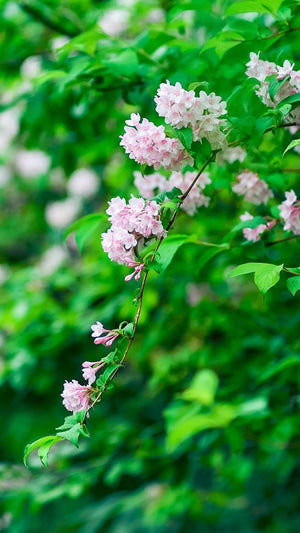
PLANTING
USDA Hardiness Zones: Hardy in Zones 4–8, though some reblooming hybrids may extend into Zone 9.
Soil: Prefers moist, well-drained soil but adapts to a wide range of conditions. Avoid overly wet or waterlogged sites.
Sunlight: Full sun (6+ hours/day) is ideal for best flowering and foliage color. Some cultivars tolerate partial shade, but bloom quantity may decrease.
Watering: Moderate water needs. Water regularly during establishment. Mature plants tolerate occasional dry spells.
Spacing: Space 2 to 6 feet apart depending on variety. Dwarf forms like 'My Monet' need less space, while larger varieties require more room to spread.
Planting Time: Spring or fall is best. Avoid planting during periods of extreme heat or cold.
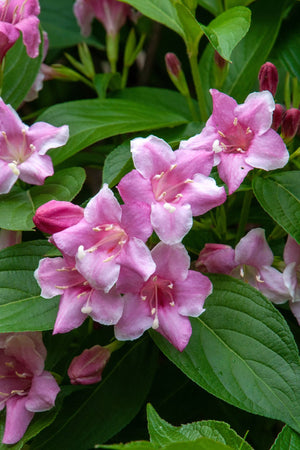
CARE
Watering: Water deeply during dry spells, especially in summer. Once established, weigela is moderately drought tolerant.
Fertilizing: Apply a balanced fertilizer in early spring to support new growth and blooms. Avoid over-fertilizing, which may reduce flowering.
Pruning: Prune immediately after the main flush of spring bloom. Remove one-third of the oldest stems to encourage vigorous new growth. Lightly shape as needed. Avoid late-summer or fall pruning, as it may remove next year’s flower buds.
Pests and Diseases: Weigela is relatively pest-free. Occasional aphids or spider mites may appear but are rarely serious. Provide good air circulation to prevent powdery mildew.
Mulching: Mulch annually with 2–3 inches of compost or shredded bark to retain moisture, suppress weeds, and regulate soil temperature.
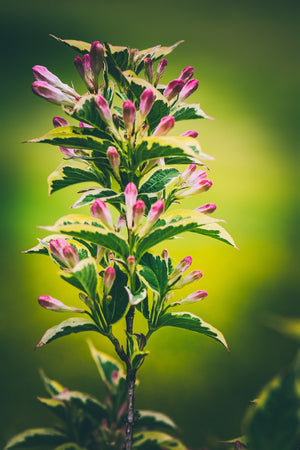
HOW TO USE
Flowering Borders: Use in mixed borders with other spring and summer bloomers like salvia, iris, or peonies. Their colorful flowers add contrast and movement.
Hummingbird and Pollinator Gardens: The tubular blooms are a magnet for hummingbirds and bees. Plant alongside penstemon, monarda, or agastache for a pollinator haven.
Foundation Plantings: Compact cultivars such as 'My Monet' or 'Spilled Wine' work well near walkways and patios, adding structure and color.
Low Hedges and Mass Plantings: Uniform varieties such as 'Kolsunn' make vibrant, manageable hedges when spaced appropriately.
Containers: Dwarf varieties can be grown in pots for patio accents or seasonal displays. Use well-drained soil and water regularly.
Color Focal Point: Weigela’s dark foliage cultivars like 'Wine & Roses' contrast beautifully with green-leaved companions, creating a focal point in perennial beds or entry plantings.
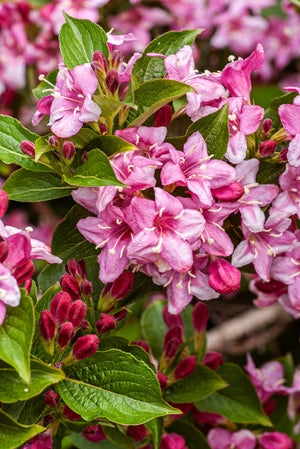
Common Questions
When to prune weigela? Prune just after spring blooming finishes, typically in late spring to early summer. This allows time for new growth to set buds for the following year.
How to prune weigela? Cut back old flowering stems to the base and remove up to one-third of the oldest wood. Lightly shape the plant to maintain form.
Do deer eat weigela? Weigela is considered deer resistant, though heavy browsing pressure may lead to occasional nibbling.
Do rabbits eat weigela? Weigela is not a preferred rabbit food, especially once woody.
When do weigela bloom? Most weigela bloom in late spring, with reblooming varieties producing flowers through summer and into fall.
Is weigela evergreen? No, weigela is deciduous and drops its leaves in fall.
How to propagate weigela? Propagate by softwood cuttings taken in late spring or early summer, or by hardwood cuttings in fall.
How fast does weigela grow? Moderate growth rate, typically 12–24 inches per year under optimal conditions.
How large does weigela grow? Dwarf cultivars remain under 2 feet tall, while standard types can reach 4 to 6 feet in height and width.
Does weigela need full sun? Full sun is best for optimal flowering and vibrant foliage, though some varieties tolerate partial shade.
Conclusion
Weigela offers a bold, colorful presence in the landscape with its extended bloom time, low maintenance needs, and wide range of cultivars. Whether you're building a pollinator border, brightening up a foundation bed, or searching for a deer-resistant flowering shrub, weigela delivers strong seasonal performance and visual impact. With reblooming and compact varieties available, there's a weigela suited for almost every garden style and size.
The Weigela Collection
Sold Out
Sold Out
Sold Out
Sold Out

